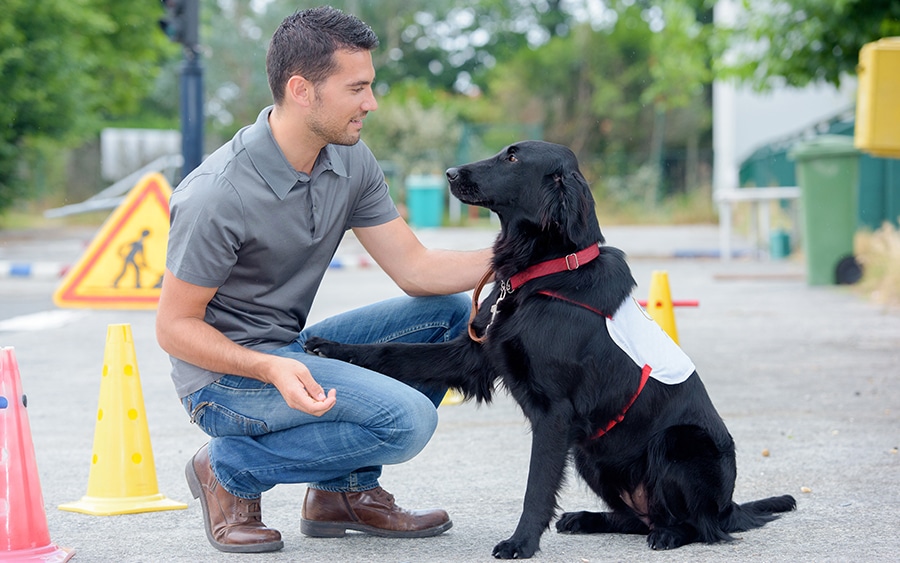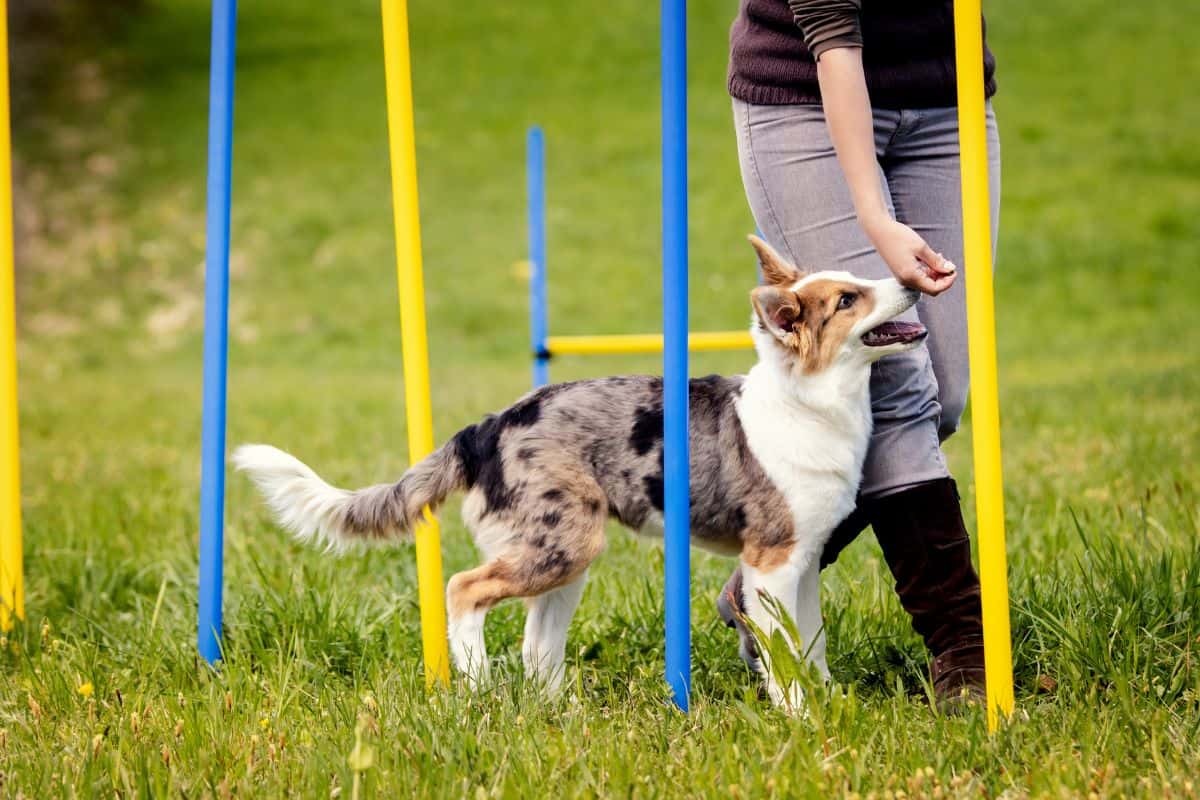Why Consistency is Key in Dog Training for Long-Term Success
Why Consistency is Key in Dog Training for Long-Term Success
Blog Article
Transform Your Dog's Habits With Proven Training Techniques
Changing your pet dog's behavior requires a nuanced understanding of their specific traits and requirements, as well as the application of tested training techniques. Uniformity in your training method not just improves obedience but additionally promotes a deeper bond of trust and regard between you and your pet.
Recognizing Pet Dog Behavior
Recognizing canine behavior is crucial for efficient training and interaction between humans and their canine buddies. Dogs, as social pets, exhibit a series of behaviors affected by genetics, atmosphere, and experiences - Dog training. Recognizing these habits aids owners customize their training approaches to meet the particular requirements of their dogs
Key aspects of canine habits consist of body language, vocalizations, and social interactions. In addition, socializing plays an important function in forming behavior; canines that communicate positively with different people and various other pets are generally more adaptable and well-adjusted.
Moreover, recognizing stress signals-- such as panting, avoidance, or pacing behaviors-- can prevent escalation into extra significant concerns. Proprietors that are attuned to their canine's behavior can create a nurturing and secure setting, promoting count on and enhancing the training procedure. Inevitably, a deep understanding of canine actions lays the structure for a harmonious partnership and effective training end results, making sure both pet dogs and their owners thrive with each other.
Favorable Reinforcement Strategies
Favorable reinforcement techniques are extensively acknowledged as one of the most reliable techniques for training pet dogs, promoting a positive understanding atmosphere. This approach entails gratifying preferred actions with treats, praise, or play, consequently encouraging the pet to repeat those actions. Unlike corrective approaches, positive support builds trust fund and reinforces the bond between the instructor and the canine.
To implement positive support successfully, timing is essential. Incentives ought to be offered instantly adhering to the desired behavior to assist the pet make the connection. Consistency is additionally important; making use of the same commands and incentives helps the canine comprehend what is anticipated. Additionally, varying the benefits can maintain the pet engaged - Dog training. Rotating in between treats, toys, and verbal praise can preserve passion and motivation.
It is essential to note that favorable support is not regarding bribery; rather, it has to do with strengthening great behavior. With time, as the canine finds out to link specific activities with favorable end results, the regularity of benefits can be slowly minimized, transitioning to verbal praise or periodic benefits. This technique not only encourages obedience but additionally advertises a certain and delighted pet dog, making training a more pleasurable experience for both parties involved.
Resolving Typical Concerns
Addressing typical concerns throughout pet training is necessary for guaranteeing a harmonious and successful partnership in between the canine and its owner. Several pet dog owners come across behavioral challenges, such as too much barking, jumping, and chain drawing. Comprehending the root triggers of these actions is critical for efficient training.
To mitigate this, give ample physical exercise, mental stimulation, and possibilities for social interaction with both people and other pet dogs. Educating the canine to rest upon welcoming can reroute this actions favorably.
Leash drawing is an additional prevalent problem, regularly arising from a pet dog's enthusiasm to explore. Using correct leash dealing with strategies, combined with training procedures that urge loose-leash strolling, can considerably enhance this actions.
On top of that, issues like resource securing or splitting up anxiety require tailored methods. Steady desensitization and counter-conditioning can be efficient in resolving these obstacles. By recognizing and proactively managing these common issues, dog owners can promote a much more satisfying training experience and reinforce the bond with their canine friends.
Uniformity in Training

To achieve uniformity, it is important that all participants of the family stick to the exact same training approaches. As an example, making use of the exact same verbal hints and hand signals guarantees that the pet receives uniform messages. In addition, the timing of modifications and rewards must correspond; instant reinforcement increases the probability that the dog will connect the actions with the outcome.
Routine technique sessions, coupled with structured schedules for feeding, walking, and playtime, aid dogs expect and recognize their setting, making them more receptive to training. Ultimately, consistency promotes a feeling of protection and trust, empowering canines to discover extra effectively.
Structure a Solid Bond
Just how can promoting a solid bond between a dog and its owner boost the training experience? A strong connection constructed on trust and regard functions as the structure for efficient training. When a pet dog feels protected in its connection with its proprietor, it is extra most likely to display positive actions and be responsive to discovering. This bond encourages the pet dog to involve totally in training sessions, as it checks out the owner as a resource of advice and assistance.
Furthermore, a strong bond helps with much better interaction. Pet dogs are adept at reviewing human cues, and a relying on partnership enables for clearer signals throughout training. Proprietors who spend time in building this bond with play, socializing, and positive support create a setting where dogs really feel motivated and excited to learn.
Furthermore, a well-established link can decrease anxiousness and behavioral concerns, as dogs are much less most likely to act out when they feel understood and taken care of. Therefore, focusing on the growth of a strong bond not just boosts the training experience but additionally adds to a better and more well-adjusted canine. Eventually, the trip of training changes into a collective collaboration, leading to lasting behavioral enhancements.
Verdict

Proprietors that are attuned to their pet dog's habits can develop a caring see this site and risk-free setting, fostering depend on and boosting the training procedure. Eventually, a deep understanding of canine habits lays the structure for an unified connection and efficient training end results, ensuring both dogs and their proprietors prosper with each other.
Addressing typical problems throughout pet dog training is important for guaranteeing a effective and harmonious relationship between the dog and its proprietor.Uniformity is a foundation of effective canine internet training, as it develops a clear framework for the dog to understand habits and assumptions.In conclusion, changing a pet's behavior via confirmed training approaches requires an understanding of canine actions, the application of positive reinforcement methods, and an emphasis on uniformity.
Report this page